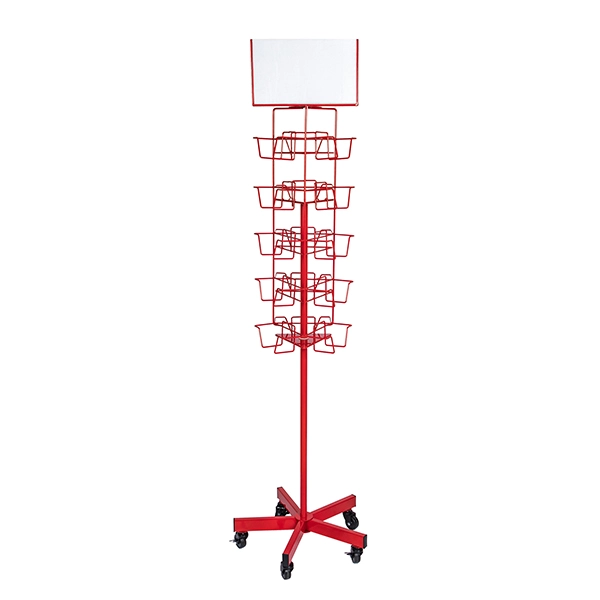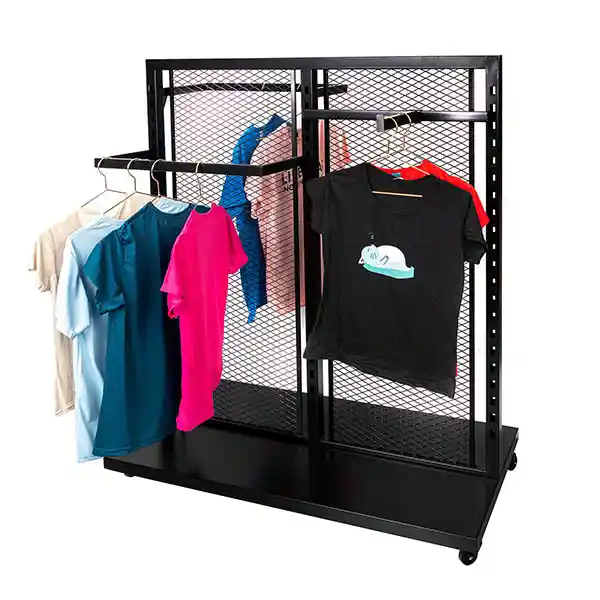Kluczowe punkty i praktyczne wskazówki dotyczące ekspozycji przekąsek w handlu detalicznym
Sklepy z przekąskami, często o mniejszej skali i ograniczonej powierzchni, stoją przed wyjątkowymi wyzwaniami związanymi z ekspozycją produktów. Pomimo stosunkowo prostych układów w sklepach detalicznych, szeroka gama przekąsek różnych marek i rodzajów opakowań może sprawić, że proces ekspozycji będzie bardziej złożony w porównaniu z innymi sklepami typu convenience. Głównym celem sklepów detalicznych z przekąskami jest ułożenie tych różnorodnych produktów w sposób, który nie tylko upiększy sklep, ale także zwiększy sprzedaż. Na tym blogu omówimy 3 kluczowe punkty i 7 praktycznych technik skutecznej ekspozycji produktów w sklepie z przekąskami, a nawet cały proces sprzedaży. ekspozycja żywności przemysł. Zanurzmy się i wspólnie zbadajmy te strategie.
3 kluczowe punkty ekspozycji przekąsek w handlu detalicznym
Skuteczna ekspozycja produktów w sklepach z przekąskami opiera się na 3 kluczowych aspektach: Jakie są środki ostrożności przy ekspozycji przekąsek? Jakie są metody ekspozycji przekąsek? Jaki rodzaj stojaka jest odpowiedni do ekspozycji przekąsek? Wybór projektu i narzędzi ekspozycyjnych ma znaczący wpływ na sprzedaż produktów, co sprawia, że kluczowe znaczenie ma właściwe dobranie tych aspektów.
4 podstawowe kwestie dotyczące ekspozycji produktów w sklepie z przekąskami
- Prawidłowe dopasowanie tagów cenowych do produktów: Dobrze dopasowana etykieta cenowa pomaga klientom jasno zrozumieć cenę przekąsek, co z kolei może wpłynąć na ich decyzję o zakupie. Dlatego tak ważne jest, aby etykiety cenowe były prawidłowo dopasowane do odpowiednich przekąsek podczas procesu wyświetlania, aby uniknąć niepotrzebnych sporów cenowych i skarg klientów.
- Rozdzielanie różnych kategorii: Różne marki, typy opakowań i kategorie przekąsek powinny być eksponowane oddzielnie, aby zachować uporządkowany wygląd na półkach ekspozycyjnych. Na przykład, dmuchane przekąski i cukierki nie powinny być umieszczane razem; podobnie, butelkowane i pakowane przekąski powinny być oddzielone, a duże marki nie powinny dzielić tego samego poziomu półki co mniejsze marki.
- Maksymalizacja wykorzystania najlepszych pozycji wyświetlania: Najlepszą pozycją ekspozycyjną jest zazwyczaj środkowa półka, wyrównana z linią wzroku klienta, oferująca maksymalną widoczność produktu i przyciągająca potencjalnych nabywców. Większe opakowania przekąsek powinny być umieszczane na dolnych półkach, mniejsze opakowania na górnych półkach; produkty niskomarżowe w rogach, a produkty o wysokiej rentowności na środku. Ważne jest, aby nie marnować tych cennych pozycji ekspozycyjnych.
- Wybór właściwej metody wyświetlania: Różne produkty wymagają różnych metod ekspozycji. Nieprawidłowa ekspozycja może prowadzić do bałaganu na półkach, utrudniać klientom przeglądanie i branie produktów, a ostatecznie wpływać na sprzedaż w sklepie. Opanowanie prawidłowych technik ekspozycji ma kluczowe znaczenie dla zmaksymalizowania potencjału sprzedażowego każdej przekąski.
7 praktycznych technik ekspozycyjnych dla sklepów z przekąskami
Wyświetlacz głośności
Ekspozycja ilościowa odnosi się do prezentowania dużej ilości produktów, dając klientom wrażenie obfitości i różnorodności, co może stymulować ich chęć zakupu. Celem jest zwiększenie obecności produktów w sklepie, uczynienie ich łatwo widocznymi i dostępnymi, a następnie przyciągnięcie klientów do pozostania dłużej i ostatecznie dokonania zakupów. Ekspozycja objętościowa jest szczególnie skuteczna w przypadku artykułów spożywczych, które przyciągają klientów swoją pełnią, przystępną ceną i łatwością wyboru.
Istnieje wiele specyficznych metod masowej ekspozycji, takich jak wiszące kosze sklepowe, wyspy sklepowe, ekspozytory ścienne, witryny sklepowe, platformy, wózki sprzedażowe i masowe ekspozytory typu full-box. Wśród nich masowa ekspozycja typu full-box jest powszechną metodą ekspozycji stosowaną przez duże i średnie supermarkety, tzn. w sklepie wydzielana jest przestrzeń lub usuwane są końcowe półki w celu wyświetlenia pojedynczego produktu lub 2-3 rodzajów produktów jako masowej ekspozycji. Ogólnie rzecz biorąc, ekspozycja masowa jest stosowana w następujących sytuacjach: promocje niskich cen, promocje sezonowe, promocje świąteczne, promocje nowych produktów, reklama medialna i zakupy na dużą skalę przez klientów.

Wiszący wyświetlacz
Wisząca ekspozycja polega na rozłożeniu i zawieszeniu produktów, umożliwiając klientom oglądanie i dotykanie ich pod różnymi kątami. Metoda ta jest powszechnie stosowana w przypadku tekstyliów, odzieży lub małych, płaskich i wydłużonych przedmiotów, którym brakuje trójwymiarowego wyglądu. W przypadku przekąsek idealna wysokość zawieszenia wynosi około 1,5 metra, co odpowiada normalnej wysokości przeglądania i dotykania przez większość klientów.
Ponieważ jednak wiszące ekspozytory zajmują więcej miejsca, ważne jest, aby efektywnie wykorzystać przestrzeń, upewniając się, że alejki nie są zbyt wąskie, co mogłoby utrudniać chodzenie i zmniejszać atrakcyjność wizualną.
Na przykład przekąski w torebkach, które mogą wyglądać na zagracone, gdy są umieszczone bezpośrednio na półkach, powinny być zawieszone, aby zachować schludny i uporządkowany wygląd.
Wyświetlacz piętrowy
Ekspozycja piętrowa polega na losowym układaniu produktów na wyznaczonej półce, dając klientom wrażenie specjalnej oferty lub przecenionych produktów. Jego faktyczne działanie jest bardzo proste i polega na układaniu towarów od dołu do góry zgodnie z określonym poziomem. Jest on zwykle używany do zwykłych towarów o niskim efekcie dekoracyjnym i popularyzacji. Rolą układania w stosy jest podkreślenie efektu wyświetlania towarów z ilością, dając klientom bardzo silne poczucie taniości i gorącej sprzedaży.
Przykładowo, produkty o dużej dolnej powierzchni styku, takie jak makaron instant w wiaderkach lub przekąski w puszkach, mogą być bezpośrednio układane i eksponowane na półce, co pozwala na bardziej rozsądne i efektywne wykorzystanie przestrzeni na półce.

Wyświetlacz kombinowany
Wyświetlacz kombinowany jest również nazywany wyświetlaczem powiązanym lub wyświetlaczem wspierającym, który jest metodą wyświetlania, która wyświetla różne rodzaje produktów uzupełniających razem lub wyświetla produkty związane z głównymi produktami wokół głównych produktów, aby przyciągnąć i ułatwić klientom zakup. Ekspozycja powiązana zwiększa elastyczność ekspozycji sklepowej i zwiększa możliwości wyświetlania różnych rodzajów produktów. Jest to skoncentrowane ucieleśnienie zasady łączenia produktów w ekspozycji produktów. Korzystając z powiązanych wyświetlaczy, należy zwrócić uwagę na korelację między produktami, aby zapewnić, że klienci mają wspólne zachowania zakupowe.
Powiązany wyświetlacz dotyczy w szczególności przekąsek:
- Stosowanie skojarzeń: np. umieszczanie makaronu instant i kiełbasek z szynki, napojów razem, chleba i mleka razem w obszarze dań gotowych.
- Stowarzyszenie zależne: napoje, takie jak woda mineralna, soki, napoje gazowane, kawa, herbata, napoje funkcjonalne, produkty mleczne itp. Klienci mogą wygodnie wybierać wiele produktów w tym samym obszarze wyświetlania.
- Związek z wiekiem: przekąski dla nastolatków, takie jak produkty mleczne, orzechy, produkty ziemniaczane, lody itp.
- Powiązanie znaków towarowych: Na przykład Mars Wrigley posiada wiele znanych marek, w tym M&M's, SNICKERS, ORBIT, EXTRA, Skittles i inne produkty

Wyświetlacz pionowy
Ekspozycja pionowa jest idealna dla przekąsek w pudełkach, które można ustawić pionowo na półkach. Metoda ta poprawia widoczność produktu, ułatwiając klientom zapoznanie się z informacjami na opakowaniu i wzięcie produktu do ręki.
Kreatywny wyświetlacz
Wystawy w sklepach z przekąskami nie zawsze muszą być sztywne i formalne. Od czasu do czasu można wprowadzić trochę kreatywności, ustawiając ekspozycje tematyczne, które mogą ożywić atmosferę i stworzyć środowisko zakupów oparte na doświadczeniu.
Wyświetlacz zbiorczy
W przypadku małych przekąsek sprzedawanych luzem, standardowe półki mogą nie być najlepszym rozwiązaniem. Zamiast tego można użyć specjalnych koszy ekspozycyjnych, aby zaprezentować te produkty w bardziej atrakcyjny i zorganizowany sposób.

Podsumowując, skuteczna ekspozycja produktów w sklepie z przekąskami lub sklepie spożywczym wymaga starannego rozważenia i strategicznego wdrożenia różnych technik. Rozumiejąc 4 kluczowe aspekty i stosując te 4 metody ekspozycji, można stworzyć zachęcające środowisko zakupowe, które nie tylko dobrze wygląda, ale także napędza sprzedaż.
Powiązane posty:
Zwiększanie sprzedaży detalicznej poprzez merchandising wizualny
Jak skuteczne są niestandardowe wyświetlacze POP w handlu detalicznym?





